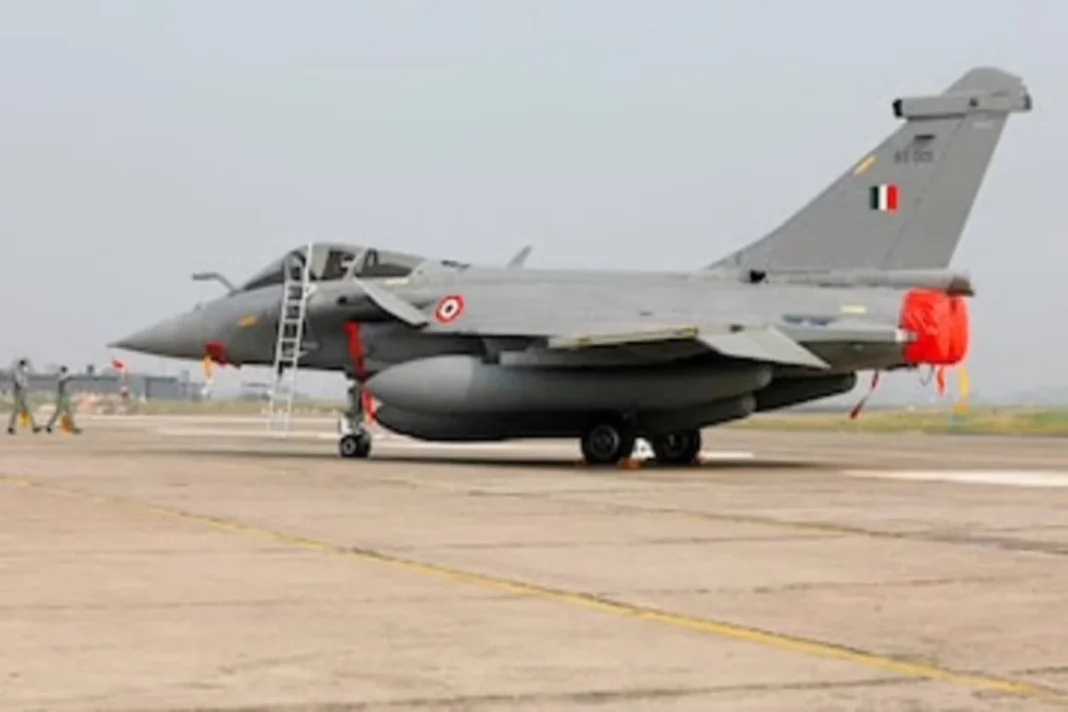A recent report by the US-China Economic and Security Review Commission has alleged that China orchestrated a “disinformation campaign” against French Rafale jets in the aftermath of the India-Pakistan military conflict that ended in May 2025. According to the report, China used fake social media accounts and manipulated imagery to undermine the reputation of the Rafale aircraft and promote its own J-35 fighter jets.
Fake Accounts, AI Images Used
The commission stated that Chinese networks circulated AI-generated and video-game-based images purporting to show debris of Rafale jets allegedly destroyed by Chinese-origin weaponry supplied to Pakistan. The report describes these activities as an attempt to influence global defence markets and tilt new fighter jet sales in favour of Chinese platforms.
The allegations echo earlier assessments by French military and intelligence agencies, which had warned that China was running coordinated campaigns to damage Rafale’s global image. A previous French intelligence report, cited by the Associated Press, claimed that defence attachés posted in Chinese embassies were directly involved in spreading such narratives.
Sales Pressure and Regional Influence
The US report also notes that China sought to capitalise on the India-Pakistan conflict to boost sales of its defence systems. By publicising exaggerated claims of performance during the clash, China reportedly aimed to present its J-35 aircraft and other systems as superior alternatives.
The report further alleges that, despite Indonesia already being engaged in a Rafale acquisition process, China managed to persuade Jakarta to temporarily pause the deal, thereby extending Beijing’s influence over regional military procurement decisions.
Extensive China-Pakistan Defence Cooperation
Months before the May conflict, China and Pakistan had intensified defence cooperation. They conducted the Warrior-VIII counterterrorism drills between November and December 2024, and the Chinese Navy participated in Pakistan’s multinational AMAN exercises in February 2025.
The report also states that China offered to sell Pakistan a package of 40 J-35 fifth-generation fighter jets, KJ-500 early warning aircraft, and ballistic missile defence systems in June 2025—coinciding with Pakistan’s announcement of a 20% rise in its defence budget for the 2025–2026 fiscal year.
BJP Questions Domestic Amplifiers of Narrative
Reacting to the US findings, BJP leader Amit Malviya questioned who within India may have “amplified” the Chinese narrative during the conflict. Without naming individuals, he pointed out that certain voices repeatedly demanded “numbers” on jets lost, despite the Indian Air Force clarifying that none of its assets had been downed and that operational details could not be disclosed mid-conflict.
Background: Operation Sindoor
On May 7, India launched Operation Sindoor, striking terror infrastructure in Pakistan and Pakistan-occupied Kashmir to avenge the killing of 26 civilians in the Pahalgam terror attack. Over 100 terrorists were reportedly neutralised. The escalation began after Pakistan carried out a drone and missile attack targeting Indian Army bases and civilian areas.


